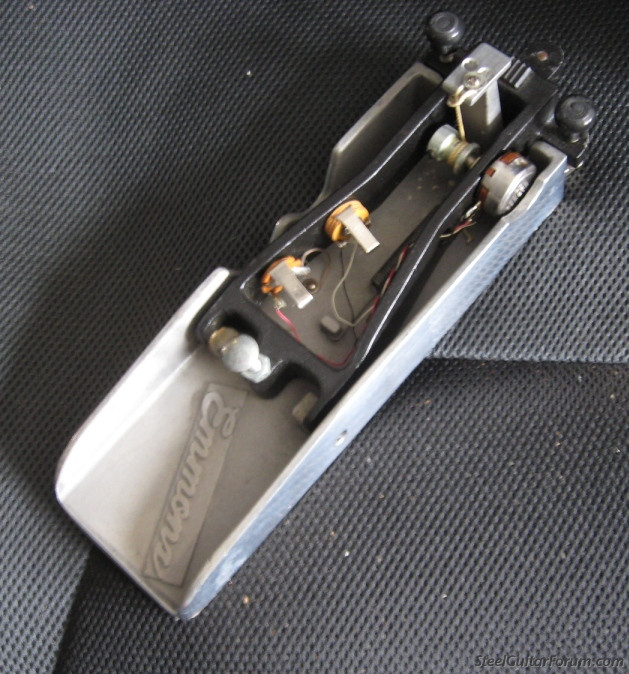

The Hawaiian guitar sound was soon adapted to other genres.
#Emmons steel guitar volume pedal holder movie#
The earliest record of the Hawaiian guitar being used in country music is said to be when cowboy movie star Hoot Gibson brought Hoopii to Los Angeles to play in his band in the early 1920s. Sol Hoopii was the most famous of the Hawaiians who spread the sound of instrumental lap slide throughout the world.

Though almost forgotten for several decades, the Weissenborn has returned to the stage and studio, thanks to such lap-slide virtuosos as Ben Harper and David Lindley. The first production electric lap steel was introduced in 1932: the aluminum Ro-Pat-In (later Rickenbacker) A22 “Frying Pan.”ĭeveloped by Hermann Weissenborn in the 1920s, the acoustic hollowneck guitar that bears his name is a close descendant of the Hawaiian guitar. A few players-mostly rock musicians-use a conventional flatpick or bare fingers. The guitar is typically plucked using a thumbpick and metal or plastic fingerpicks. Either way, a Hawaiian guitar’s strings never touch the fretboard, and any frets or markers are purely for reference. Some of these early acoustic instruments were built with a raised nut to hold the strings off the fretboard-usually about 1/2" above it-but sometimes a standard acoustic was converted to a Hawaiian guitar by raising the strings with an arched metal extender positioned over the nut. On a Hawaiian guitar, the player alters pitch by lightly pressing a metal or glass bar against the strings and sliding it around (rather than pushing strings down to the fretboard with fingers, as on the Spanish guitar). The method soon became popular all over Hawaii. He then taught it to his classmates, who carried the style to other islands.

Kekuku developed a method of playing this new instrument-called “steel guitar” after the bar used to play it. As a boy, his shop teacher helped him fashion a cylindrical steel bar and metal fingerpicks. Legend has it the guitar was first laid flat by a young Joseph Kekuku on the island of Oahu in 1874. The Hawaiians developed a playing style based on straight major chord tuning called “slack-key” because the strings were slackened relative to standard tuning.

The 6-string guitar was introduced there by visiting European sailors in the latter part of the 19th century. It originated, pre-pedals, in the Hawaiian Islands. Its expressive potential is still being expanded, and it’s been adopted worldwide in a variety of musical styles, from the African highlife of King Sunny Adé to the nü-jazz of Nils Petter Molvær.Īloha The pedal steel’s history began before country music existed, far from the centers of hillbilly and honky tonk. Meanwhile, pop, rock, and even avant-garde artists have embraced the instrument. Recently it’s become rare to hear pedal steel on mainstream country radio, though there are signs of a slight return. The instrument’s sinuous string bending and crying sound has long distinguished the songs coming out of Nashville and Bakersfield from pop, rockabilly, and blues. For many, pedal steel guitar is synonymous with country music.


 0 kommentar(er)
0 kommentar(er)
